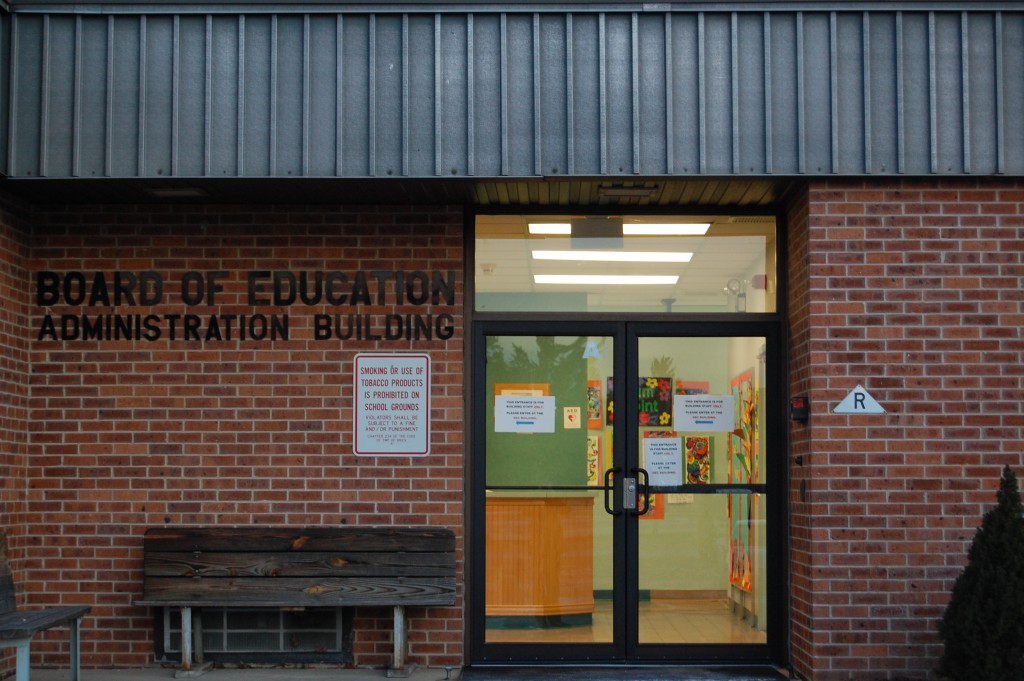The fiscal disaster facing Brick Township schools cannot be unilaterally solved by raising taxes, school officials have said repeatedly, though a tentative spending plan introduced by the Board of Education last week would raise the tax levy by about $2.5 million as the district faces a $2.54 million state funding cut.
The district, like all New Jersey governmental subdivisions, is subject to a 2 percent cap on both overall expenditures as well as the tax levy – the dollar amount charged to residents through property taxes. Under the tentative budget – which is subject to change significantly between introduction and adoption, the district’s property tax levy would rise by 1.77 percent from $117,973,136 this school year to $120,466,734 for the upcoming 2023-24 school year.
Overall, the budget will decrease from $163,322,838 to $161,141,287. The decrease is primarily linked to the loss of state funding as well as the lack of “one-shot” funding sources from federal pandemic relief funding. The district cannot legally increase taxes beyond the cap, regardless of how much funding is cut from outside sources. Superintendent Thomas Farrell said the tax levy was set at a 1.77 percent increase due to the retirement of some debt service.
|
|
“When you retire some debt service, your tax levy may actually be less,” he said, notwithstanding the total operating budget.
“With every cut made, we’re doing our best to minimize the impact on our students and our staff,” Farrell told residents at the meeting. “I assure you we are looking at all avenues that are in the best interests of our students.”
The district, even before the latest round of funding cuts was announced by Gov. Phil Murphy, warned that staff reductions could be on tap for the 2023-24 school year, though the district would try its best to avoid layoffs by eliminating positions through attrition.
Some budgetary relief could be on the way, however, as state legislators are considering restoring $102 million in funding to the few districts – including 19 out of Ocean County’s 31 districts – that saw funding cut rather than raised in Murphy’s proposed statewide spending plan. Led by state Sen. Vin Gopal (D-Monmouth), the effort to restore some funding came after significant lobbying by school officials, including some in Gopal’s legislative district, considered a major swing district in state political circles. Gopal, known for bipartisan compromise, also chairs the state Senate Education Committee.
The bill restoring funding passed the upper chamber of the legislature unanimously Monday.
Brick would not see all of its of funding restored, but would face a cut of $889,791 compared to the $2.54 million cut. It was not immediately clear how the pared-down cut in funding would affect the Brick district’s operating budget or tax levy. A motion to restore all of the lost funding, which would have allocated $155 million, was floated by state Sen. Declan O’Scanlon (R-Monmouth) but was defeated in a largely party-line vote.
Senate GOP makes motion to amend school aid bill to completely eliminate cuts to school districts, which would come at a cost of appx $155 million. Voted down by senate Dems. pic.twitter.com/SsHHQ8BlCM
— Daniel Han (@danieljhan_) March 20, 2023
Gopal acknowledged the funding restoration measure that did pass is not a permanent solution to some districts’ fiscal woes.
“The planned funding cuts would have put dozens of school districts in a bind, forcing them to make difficult, rushed decisions and drastic cuts to personnel and programs,” Gopal said in a statement. “This restoration will buy these districts some time, and help them set course on a brighter future.”
Under the state’s funding formula – itself the subject of litigation – Trenton calculates that Brick’s property taxes are effectively too low, and under-fund its schools by $23 million. Officials, on the other hand, hold that districts like Brick are penalized for their efficiency and comparatively low per-pupil costs compared to other districts in the state, and the formula erroneously expects residents to be able to afford more in property taxes based on waterfront land values rather than actual income measures.












